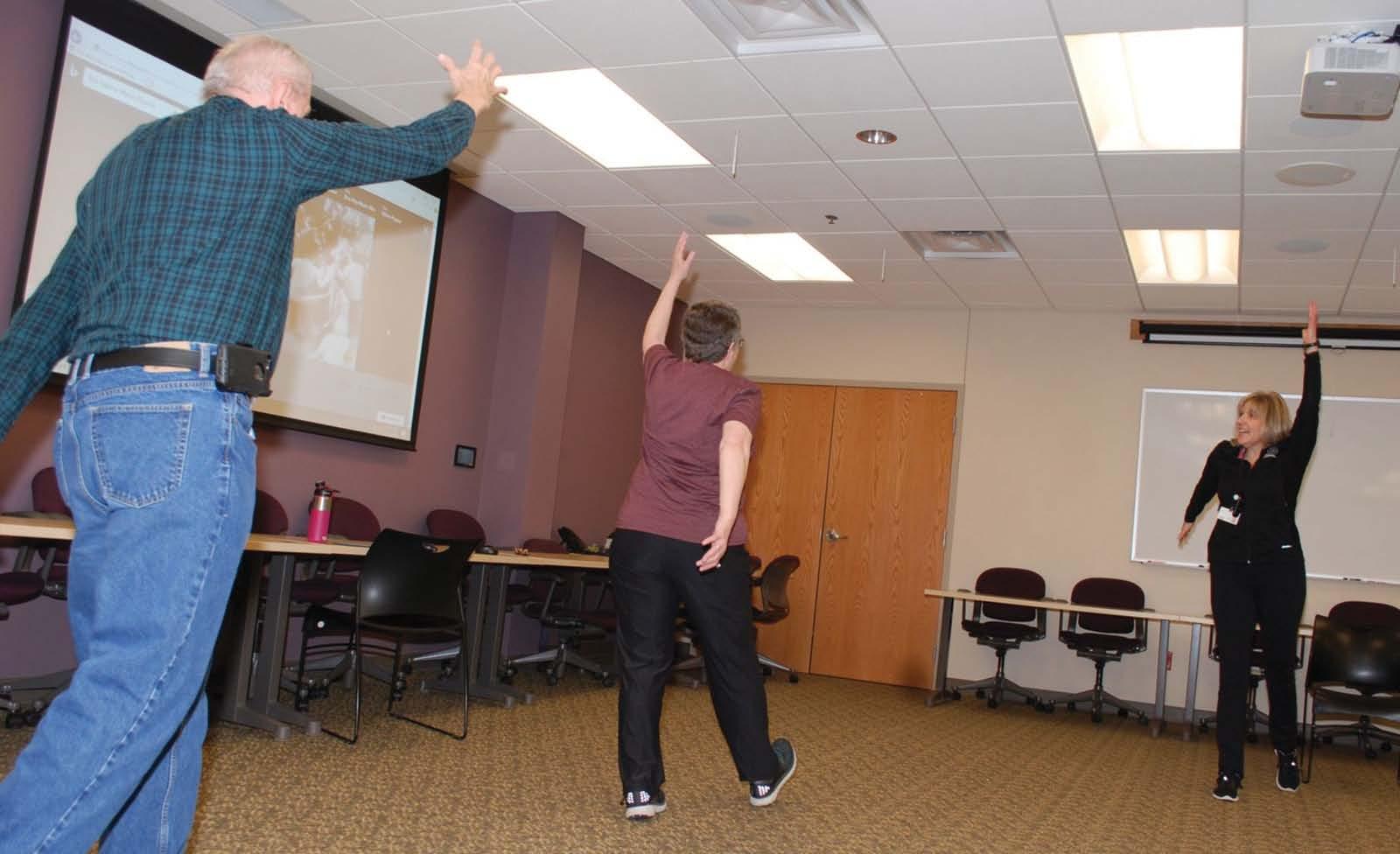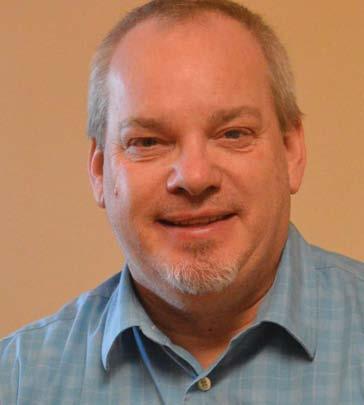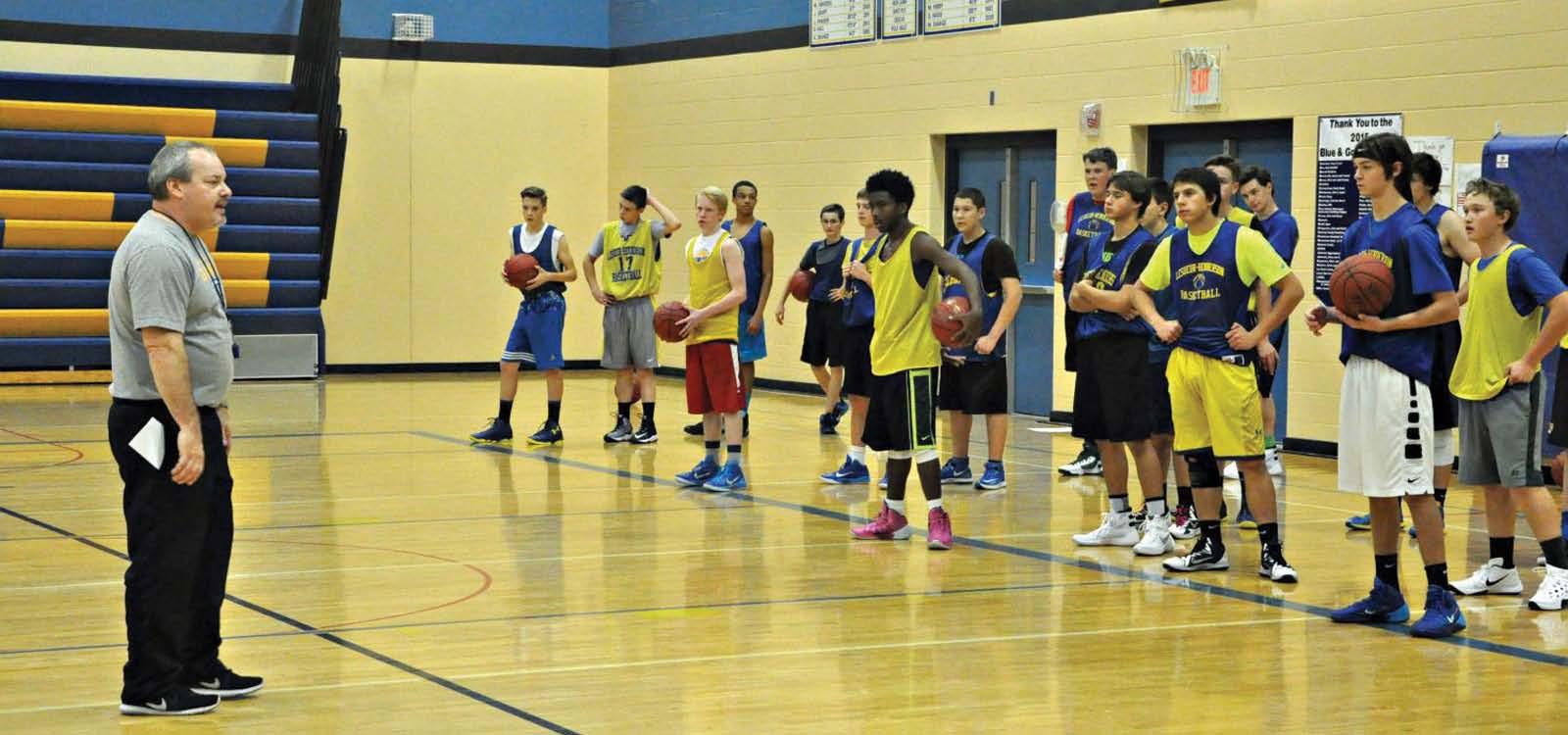PAGE 10
VALLEY PROFILES
Thursday, March 26, 2020
River’s Edge instructors help clients with pain management, disease prevention By HEATHER GORDON Correspondent Educators can come in many different forms. At River’s Edge Hospital and Clinic in St. Peter, quality classroom training and hands-on educational resources keep many aging community members healthy and active, even with a prognosis of debilitating health conditions, such as arthritis, Parkinson’s disease, and diabetes. Without the educational resources and coursework offered to River’s Edge community members, many patients would not have the capability of maintaining a healthy, active lifestyle.
Range of motion According to Nicole Boelter, clinical exercise physiologist, the classes and training that are offered to patients, such as those who take part in her arthritis exercise class, are evidence based programs, proven to reduce pain, while increasing and maintaining strength, range of motion, and flexibility, through a variety of exercises. “The goal, as we get older, is to maintain our strength, balance, and flexibility. If you don’t use those muscle groups, you will eventually lose them,” Boelter said. “Living a normal lifestyle with arthritis, requires having to continuously use the core muscle groups in order to maintain flexibility, and range of motion. If these muscle groups are not used, it will eventually cause more pain, and less range of motion for that individual.”
Deb Mattson, along with Nicole Boelter (not pictured) teach LSVT-BIG for Parkinson’s twice a week at River’s Edge Hospital. The class covers core strengthening, teaching clients how to move bigger and live better. (Heather Gordon/St. Peter Herald) toilet, without the help of a handrail. always conclude Boelter’s classes. The main goal of Boelter’s class is for her clients to maintain independence. Each participant needs to be able to get up off the couch, use the restroom on their own, and do their daily routine without falling or intense pain.
“People sometimes have a hard time seeing improvements, because we continue to make it harder as class advances. Some basic exercises that were hard a year ago, are easier or consist of another element of challenge,” she said.
The class exercises are repeated each Boelter noted that in the past six years, the class size has gone from week, but increase in intensity as six to 29 clients, ranging from 60 participants grow in strength and Boelter incorporates age-appropriate to 69 years old. This includes the mobility. All participants advance at functions into her exercise routines, original six members, who still attheir own pace. Each class consists of showing each participant the benseated, low impact, low range of mo- tend her classes, twice a week. These efits of each exercise with relatable and functional daily living tips. For tion exercises, followed by standing classes are also a social time for the and strength training for endurance participants. example, raising or lifting an arm and increased range of motion. above their shoulder, as if reaching Relaxation and an educational topic “My clients really look forward to into a cupboard. Or getting off the this class. The social aspect is huge related to health and well being
and they come back because it is fun. It is a fun, safe environment, and when they don’t get to come, they miss it,” Boelter said. “Talk about inspiration though; have my job and see these people who are still moving.”
Prevention While River’s Edge strives to maintain healthy living for those with disease or age-related prognosis, there are also other courses offered in the prevention of the onset of disease Deb Mattson, Lead Physical Therapist at River’s Edge Hospital or declining health. I Can Prevent holds a LSVT-BIG exercise class for Parkinson’s patients twice a week. The class incorporates core exercises, Tai Chi, modified boxing, and other movements to increase patients mobility and Continued on page 14 improve their quality of life. (Heather Gordon/St. Peter Herald)
PREVENTION







